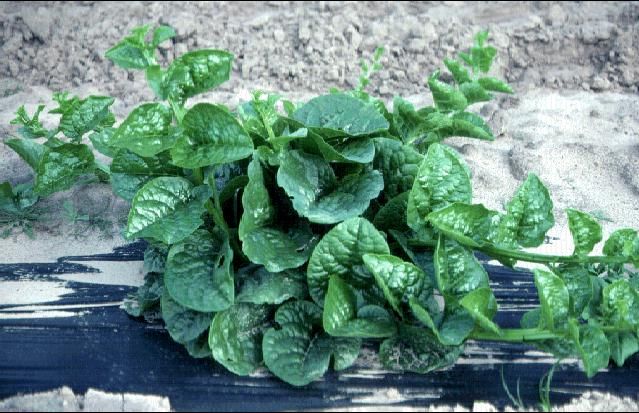Spinach, Malabar—Basella rubra L.1
Malabar spinach is also known as Ceylon spinach, climbing spinach, gui, acelga trepadora, bretana, libato, vine spinach, and Malabar nightshade. The red leaf form belongs to the rubra species, while the green form is classified in the alba species.

Credit: James M. Stephens, UF/IFAS
Description
Malabar is not a true spinach, but its leaves, which form on a vine, resemble spinach and are used in the same way. It comes from India and is distributed widely in the tropics, particularly in moist lowlands. In Florida, it is rare, even in home gardens.
Culture
Here and in the tropics, it grows well in a variety of soils, seemingly without regard to fertility. Moisture is important, and the plants make their best growth during warm, rainy periods. A small amount of shade seems to be beneficial, although open-sun culture does not present a serious problem.
Malabar spinach can be grown from seeds or cuttings. While not essential, the vine should be trellised. Two vines are sufficient to supply a small family all summer and fall. Vines are somewhat ornamental, so they can be trained to climb over doorways for easy accessibility. The thick, fleshy leaves are cut off together with some length of stem to keep the plant pruned to a desired shape. Stems that are too tough to eat can be put back in the soil and rerooted. Plants started in Gainesville in August made excellent growth during the fall months.
Use
When cooked, Malabar spinach is not as slick in texture as many greens, such as spinach. The Bengalis cook it with chopped onions, hot chilis, and a little mustard oil.


